A Common Question
It's now becoming a common question among both first-time and long-time Glacier National Park visitors: "What will the park be called when the glaciers are all gone?"
Some possible answers I've heard, not all of which should be taken completely seriously:
• The Park Formerly Known As Glacier National Park.
• Global Warming National Park.
• Thanks George W. Bush National Park.
• If Only We'd Listened to Al Gore, This Never Would Have Happened National Park.
• Glacier National Park.
If I had to bet, I would go with the fifth choice. The reason-- although a name change might seem appropriate, the park is actually not named for the shrinking glaciers still seen there today; it is named as it is because the dramatic landscape is the handiwork of glaciers that predated today's by thousands of years and which were far more massive than today's ever were.
The glorious vandalism by ice that carved the mountains and valleys on display in Glacier today occurred approximately 20,000 years ago when ice sheets filled the valleys to the very mountaintops we see now. Those ice sheets shaped the many horns, knife edges, arêtes, and other glacial features that amaze climbers, hikers, and casual sightseers alike.
So although today's glaciers are still at work on the mountains, they are not what gives the park its name.
![Mount Merritt and Old Sun Glacier]() Old Sun Glacier
Old Sun Glacier![Blackfoot glacier]() Blackfoot Glacier, currently one of the park's largest-- by Jim Egan
Blackfoot Glacier, currently one of the park's largest-- by Jim Egan
Another Common Question
"Why are the glaciers melting, and when will they all be gone?"
Okay, that's really two questions.
The answer to the first is simple but probably not what the asker really wants to know: glaciers recede (melt) when more ice melts than accumulates.
What the asker probably really wants to know is whether human-caused climate change is responsible.
If you're now salivating over the prospect of yet another go-nowhere global warming thread here, you are going to be disappointed. This article is not a political piece. I do have an opinion on the subject based on my readings of the arguments from what I think are the three main camps-- global warming is occurring and is caused by man, global warming is occurring and is not caused by man, global warming is not occurring-- but I simply want to present some facts about the disappearing glaciers of Glacier National Park.
![Summit View]() Sexton Glacier...
Sexton Glacier...![Sexton Glacier]()
So let's go to those facts:
• Today's glaciers formed a few thousand years ago during a colder period in our planet's history.
• The glaciers were at their apex in number and size at the end of the Little Ice Age, which scientists generally agree ended about 1850.
• At the end of the Little Ice Age, what is now Glacier National Park had about 150 glaciers. Today, there are about 25 left.
• The glaciers have been in a melting trend ever since 1850, though there have been periods up until 1980 during which they did expand. Since 1980, they have been receding more rapidly than they had in the past.
• Grinnell Glacier is one of the park's largest glaciers. It was once joined with its higher, nearby neighbor the Salamander, and it was then almost three square kilometers in area. In 1993, Grinnell Glacier was 0.88 square kilometers and the Salamander was 0.23 (source).
• For several years now, scientists have predicted that the park will cease to have glaciers by 2030, but trends in recent years have some revising that estimate to 2015-2020.
• Even if the 2030 guess turns out to be the best one, it is unlikely that every single Glacier in Glacier will be gone by then; some of the largest ones are not melting as rapidly as many of the others are (Blackfoot Glacier, for example). However, there can be little doubt that if not all of the glaciers are gone by then, the remaining ones will be substantially smaller than they are today.
• Whatever the causes, it is irrefutable that the glaciers here and in many other parts of the world are receding. In fact, I could easily be writing this article about any of several glaciated areas of the world. But since Glacier's glaciers are much smaller than those found in the Alps, the Andes, the Wind River Range, the North Cascades, the Canadian Rockies, and Greenland-- other places where significant melting is occurring (though not a complete list)-- they are going to disappear sooner.
![Swiftcurrent Glacier]() Swiftcurrent Glacier
Swiftcurrent Glacier
Not all the world's glaciers are melting at the same rate, and not all glaciers are melting, but the trend of receding glaciers is well-established. An example in Glacier-- Grinnell Glacier is melting much more rapidly than the Salamander and Gem Glacier (the latter being the park's smallest named one but actually not meeting the size criterion for an official glacier) are. And all three glaciers are close to each other (see photos below), though the two smaller ones cling to cliffs and perhaps receive less direct sunlight as a result.
![Mount Gould, Dawn]() Gem, Grinnell, and Salamander...
Gem, Grinnell, and Salamander...
Another possible cause of glacial melting that does not get nearly as much notice as global warming does: "While global warming gets most of the blame for glacier recession, soot pollution from automobiles and industrial chimneys might also play a role. Clean, shiny ice reflects sunlight and remains cool. But dirty, soot-covered ice absorbs more warmth from the sun, causing a glacier to melt more quickly." Source
![Crevasses of Jackson Glacier]() Jackson Glacier
Jackson Glacier
And One More
"So what will happen when the glaciers are gone?"
In many instances, for a long time you will look at the erstwhile glaciers and see...glaciers. Well, sort of.
I am not certain if this is standard all over, but in Glacier National Park, there are three criteria for calling a mass of snow and ice a glacier:
• It must be moving downhill.
• It must be at least 100 feet thick.
• It must be at least 25 acres in area.
If the mass fails to meet any of those three, it is considered a "permanent snowfield" instead of a glacier. By those standards, most "glaciers" marked on topographic maps of the western United States are really permanent snowfields. And "permanent" is misleading, too, for in exceptionally hot, dry years, some of those snowfields melt out completely.
![Ahern Glacier #1]() Ahern Glacier
Ahern Glacier
In some cases, there truly will be nothing left behind but bare rock; that is already the case in many places in Glacier and elsewhere. In others, though, there will be a permanent snowfield, often bearing one or two of the characteristics of a glacier, for decades, centuries, or longer. The photo below shows one such permanent snowfield that once was a glacier, as does this page's Primary Image.
![A Former Glacier]() Once upon a time, there was a glacier...
Once upon a time, there was a glacier...
The answer to the larger question about what will happen is unknown. Some speculate that signature species such as mountain goats and grizzly bears will be under stress and dwindle in numbers as their ranges diminish. Some speculate that they can adapt, especially the omnivorous bears. Changing conditions always harm the specialists more than they do the generalists, and that will almost certainly be the case in Glacier. Also, the lighter snowpack may contribute to lower water levels and longer, more intense wildfire seasons. But no one really knows yet.
One change for sure-- slowly, and sadly, Glacier will lose its stunningly colored lakes. To be more accurate-- it will lose the coloring of those lakes. The incredible blues and greens of the lakes are the result of glacial flour, and when the glaciers truly die, the glacial flour will stop "flowing," and the lakes, still lovely, will look like most other alpine lakes not fed by active glaciers. To those who have seen these lakes, the loss of them will seem tragic.
![Helen Lake]() Helen Lake-- one of the many achingly beautiful glacier-fed lakes here.
Helen Lake-- one of the many achingly beautiful glacier-fed lakes here.
So What To Do?
What can we do?
This is not to offer despair or indifference. But let's assume humans are driving global warming and that we somehow agree to do what many are urging us to do; with 20 years to go, we are not going to save the glaciers of Glacier National Park. It takes far longer to create or rebuild than it does to destroy. The glaciers are doomed and have been ever since the end of the Little Ice Age. They were never going to last forever; it's just a shame for those who have to see them go.
But we can love what is there while it is still there.
We can mourn it when it's gone.
We can learn to love what comes after without forgetting what went before.
Still, something will have been lost, and it will never again be the same during our lifetimes. The park may not have been named for its glaciers, but those glaciers are nevertheless somehow integral to its character.
I could go a little further, but that would make this article stray from its purpose. The purpose was twofold: to provide some information, and to deliver an homage, some might say an early eulogy, to the glaciers of Glacier National Park, which I feel is the most beautiful place I've ever been, before they are gone.
Cheers and happy climbing to you all.
--Bob


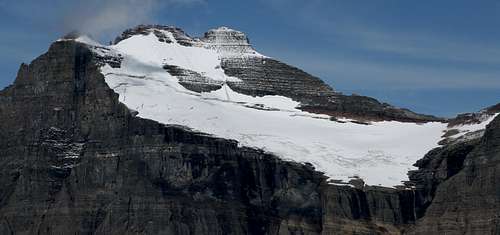
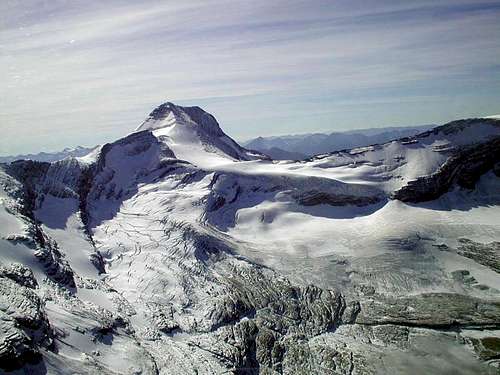
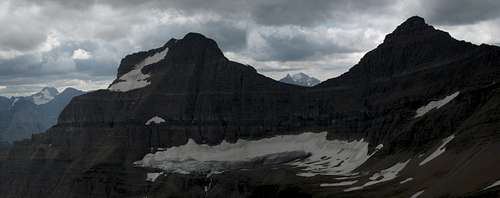
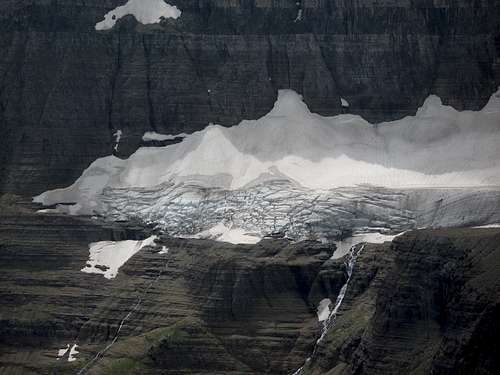
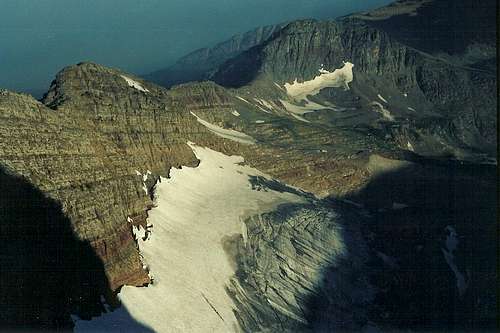
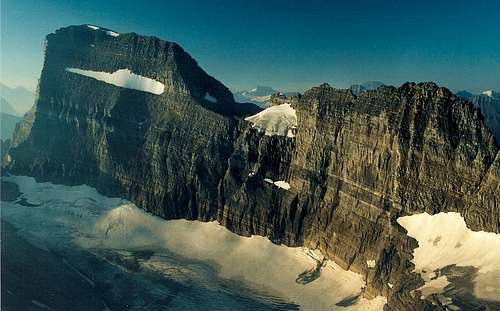
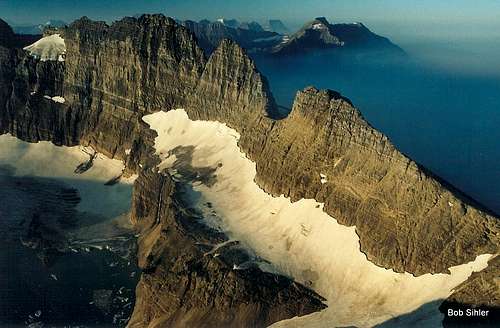
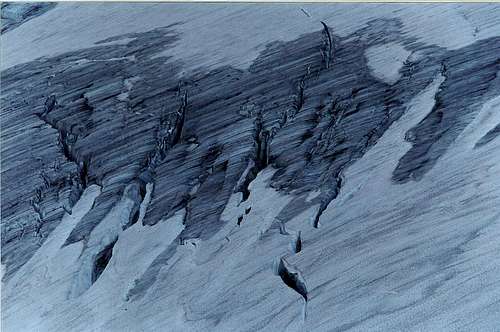
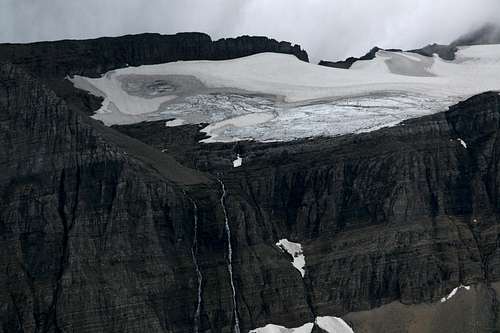
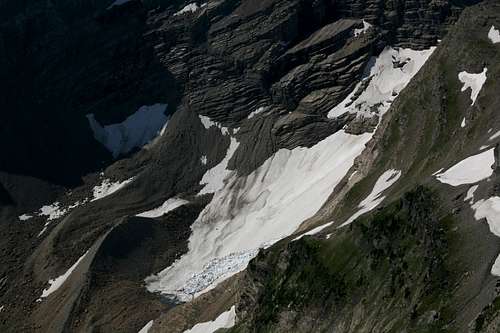






Comments
Post a Comment